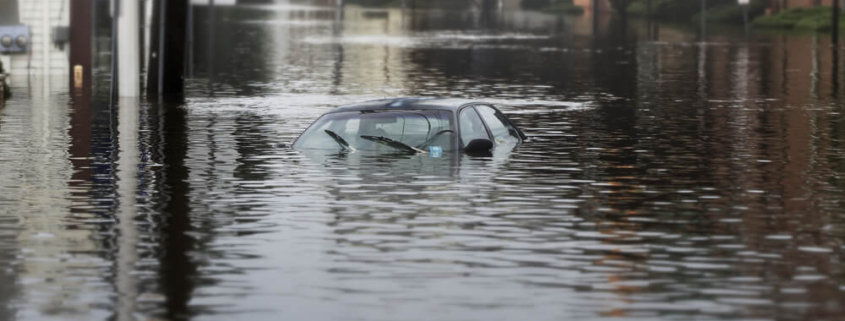OSHA Worker Safety for Hurricane Cleanup and Recovery
Extreme weather events are not only costly for homeowners and businesses, they also present an ongoing challenge for cleanup crews. Insurance companies and government agencies send disaster recovery crews into areas hit by hurricanes and major floods. Local businesses also contract out for this type of work, which can be profitable but also incredibly hazardous.
Disaster recovery cleanup after a hurricane or flood is challenging and dangerous. Rising water levels disrupt sewage disposal systems, high winds create electrical hazards, and debris can be found everywhere.
The Occupational Safety and Health Administration (OSHA) and the Centers for Disease Control & Prevention (CDC) have issued some specific guidelines for employers who have workers assigned to hurricane and flood cleanup jobs.
Personal Protective Equipment
Hazards like contaminated water, toxic fumes, and electricity aren’t always evident to workers in hurricane and flood cleanup situations. That’s one of the reasons why OSHA released a Disaster Recovery and Cleanup PPE Matrix to help employees and employers quickly identify potential hazards and select the appropriate personal protective equipment (PPE) to safeguard against dangers. Here are just a few of those guidelines:
- Normal cleanup activities — Workers should wear a hard hat, safety glasses, work gloves, steel toe boots, and a high-visibility garment.
- Working in wet conditions — Workers should wear a hard hat, safety goggles, rubber or latex gloves, waterproof boots, an impervious body suit, and a high-visibility garment.
- Working over or near water — Workers should wear a hard hat, safety glasses, work gloves, and steel-toe boots and have a PFD or life ring.
- Working at heights over 6 feet — Workers should wear a hard hat, safety glasses, work gloves, steel toe boots, and a high visibility garment, and must have fall protection.
- Working with chainsaws — Workers should wear a hard hat, safety glasses, face shield, hearing protection, work gloves, chaps, steel toe boots, and a high visibility garment.
One common requirement, no matter what the condition, is that all workers in these situations wear a hi-visibility garment and a hard hat.
Respiratory Protection
In addition to wearing proper, employers are required to assess the specific conditions at a work site to determine if any respiratory protection may be necessary to protect workers from contaminants. When dust or other particulates are present, an N-95 regular may be appropriate. Where mold may be present, workers must use an approved regulator and follow OSHA’s guidelines on Mold Standards during Disaster Cleanup for additional guidance.
If asbestos could be present in the area being addressed, OSHA’s Asbestos standard should be followed. When there is the possibility of chemical contaminants in the area, respirators must have the correct filters or cartridges to protect workers from the specific chemicals.
Not every type of respirator works for every hazard. For example, common respirators won’t protect workers from the carbon monoxide released by generators often used during disaster cleanup. Employees should be trained in the different types of respirators and their limitations.
Other Hurricane and Flood Worker Protections
Disaster recovery workers end up in a lot of dangerous situations. Fortunately, many accidents and injuries are preventable when employers and their workers follow the proper procedures. Some other safety standards that apply to this work include:
- Heavy Lifting — Water-logged materials can become incredibly heavy, which can lead to muscle strains and back injuries. Workers should use caution when doing these activities.
- Electrical Safety — Operating near downed power lines and using electrical equipment near standing water creates serious hazards. Before engaging in cleanup, workers must assess these potential dangers.
- Fall Protection — Falling from heights is a top cause of work-related injuries and deaths. OSHA has specific standards related to fall protection, which also apply to disaster cleanup operations.
- Extreme Heat and Cold — If hot or cold weather is a factor, OSHA has created guidelines for both to teach workers how to safely operate in extreme weather conditions.
- Sanitation and Hygiene — The risk of contracting various diseases and illnesses from flood and hurricane-affected areas is severe. OSHA has guidelines related to hygiene.
Learn More About Disaster Recovery and Cleanup Safety for Workers
OSHA’s standards were created to protect workers’ safety and health, no matter what the circumstances. Without these valuable protections, even in the wake of a hurricane or major flood, there could be more accidents, injuries, and deaths than those already experienced.
Most U.S. employers are subject to OSHA standards, meaning workers have the right to expect certain protections while on the job. If you’ve been injured while doing disaster recovery work and would like more information about your rights and protections, OSHA Injury Attorney can help.

 Extreme weather events are not only costly for homeowners and businesses, they also present an ongoing challenge for cleanup crews.
Extreme weather events are not only costly for homeowners and businesses, they also present an ongoing challenge for cleanup crews.
 Keeping Roofers Safe - OSHA Regulations for Rooftop Work
Keeping Roofers Safe - OSHA Regulations for Rooftop Work
Leave a Reply
Want to join the discussion?Feel free to contribute!